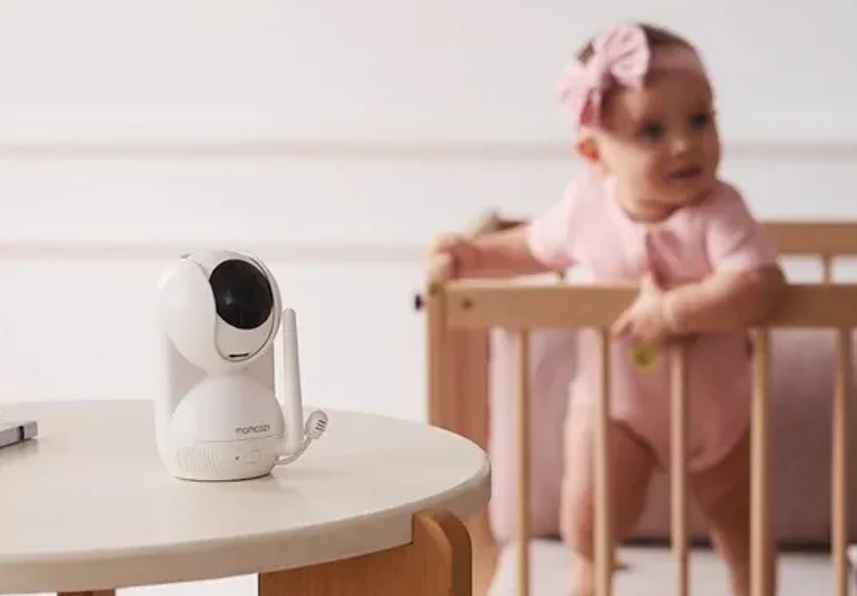
Choosing a baby monitor these days can feel like diving into a tech maze. There are countless models, each flaunting features you didn’t even know existed. As a parent myself, I get the urge to find something dependable, something that keeps you looped in without being chained to the nursery.
When I went on the hunt for our first baby monitor, I realized quickly that not all are created equal. Some shine with incredible video clarity, while others offer rock-solid battery life or security. Here’s what I’ve learned, broken down into the essentials you’ll want to weigh as you search for that just-right monitor for your family.
Types of Baby Monitors
The type of monitor you choose does shape your experience. Let's break down what’s out there and how each can serve your daily life.
Audio-Only Monitors
The classic setup. These give you just the sound, no images, no frills. They're simple, usually budget-friendly, and ideal if all you need is to hear your little one’s coos or cries while you’re in another room. Some come with handy features like volume control or visual indicators that flash when noise is detected.
Video Monitors
This is where things get more visual. Video monitors let you both see and hear your baby. Many now come with perks like pan, tilt, zoom, and even night vision. Being able to glance at the screen and see what your baby’s up to? That brings a lot of peace of mind, especially when it’s too quiet.
Wi-Fi Enabled Monitors
If you’re often away from home or juggling work-from-home duties, a Wi-Fi-enabled monitor is a game-changer. These connect to your phone or tablet via an app, giving you access from anywhere with an internet connection. They’re loaded with features—recording options, push notifications, and two-way talk functions.
And if you’re looking for a monitor that really checks all those boxes, the Momcozy HD Video Baby Monitor is one worth noting. It delivers sharp, high-definition footage even in low light so you don’t miss a thing, whether it’s a sleepy smile or your baby shifting in their crib. It also comes with two-way audio, so you can speak or soothe without walking across the house. It’s thoughtful tech like this that blends reliability with ease.
Non-Wi-Fi Monitors
Prefer a monitor that doesn’t rely on the internet? Non-Wi-Fi models are a solid pick. These work through direct signals between units, meaning fewer worries about interference or digital intrusions. They’re easy to set up and great for folks who want a more plug-and-play experience.
Wearable Monitors
Wearables are the newer kids on the block, think little socks, clips, or bands that track vitals or movement. They offer a layer of insight into your baby’s sleep and breathing patterns. Some even alert you if something seems off, which is great if you want that extra bit of reassurance.
Video and Audio Quality
If your monitor’s video and sound aren’t up to snuff, the rest of the features don’t matter much. Clarity counts.
High-Resolution Video
There’s something comforting about seeing your baby in sharp detail, especially when you’re half-asleep and squinting at the screen. Aim for at least 720p resolution - 1080p if possible. It makes a difference when trying to tell if they’re awake or just dreaming.
Night Vision
Night vision is non-negotiable for me. Babies tend to stir at odd hours, and being able to see them clearly without flipping on the lights is a huge help. Infrared night vision is your best bet here—quiet, gentle, and effective.
Two-Way Audio
Being able to talk through the monitor isn’t just a cool trick; it’s genuinely useful. A few soothing words from your voice can go a long way toward calming your baby. The better monitors transmit both ways with minimal lag and clear sound.
Noise Reduction
No one wants to hear the dishwasher or the dog snoring through the baby monitor. Good noise reduction filters help cut out background clutter so you can focus on what matters: your baby’s voice.
Connectivity and Range
This one’s simple: if your monitor can’t keep a connection, it’s not doing its job.
Wi-Fi Connectivity
Wi-Fi monitors give you the freedom to check in while you’re doing laundry, gardening, or even running errands. A strong, dual-band connection (2.4 GHz and 5 GHz) usually helps with stability and prevents lag or buffering.
Dedicated Frequency
For some parents, ditching Wi-Fi for a closed-frequency monitor feels more secure. These often come with fewer connectivity issues and less digital noise from other devices in your home. Plus, there’s something nice about keeping things analog.
Range
Look at the specs and test it in your actual home. Open-field range might be 1,000 feet, but real-life walls will knock that down. I like to walk around with the parent unit and make sure I stay connected throughout the house (and maybe even out to the mailbox).
Battery Life and Power Options
No one wants a monitor that dies halfway through nap time. Here’s what to consider.
Long Battery Life
Ideally, you want something that runs all day or all night without needing a charge. Look for monitors that last 8 - 12 hours or more on a single charge—anything less, and you’ll be tethered to the outlet too often.
Rechargeable Batteries
Rechargeables are a must. They save money over time and are easier on the environment. Just make sure the unit charges quickly and holds power well.
Power-Saving Modes
A bonus feature, but a great one. Many monitors dim the screen or enter sleep mode when there’s no movement or sound, then kick back on when needed. It’s an easy way to preserve battery without compromising safety.
Safety and Security Features
Security isn’t just about digital threats—it’s about keeping everything safe and sound, inside and out.
Encrypted Signals
Privacy matters. Encryption ensures your monitor isn’t easily hackable. If your monitor uses Wi-Fi, this is non-negotiable—make sure it offers secure transmission and protected logins.
Secure Mounting
A baby monitor that topples over isn’t much good. Look for stable bases or wall-mounting options that keep the unit out of reach but still in view.
Additional Functionalities
Sometimes, the extras make life a little easier.
Temperature Monitoring
This is one of those features you don’t think you’ll need, until you do. Sudden temperature swings can disrupt sleep or make your baby uncomfortable. A monitor that alerts you to the room being too warm or chilly? Total win.
Breathing and Movement Tracking
Some monitors take it a step further by keeping tabs on breathing patterns or movement while your baby sleeps. If you’re a first-time parent or just someone who likes the extra assurance, it can bring serious peace of mind.
Lullabies and Nightlights
Built-in lullabies and soft-glow nightlights can help your baby drift off without needing an entire sound machine setup. You can often control these features remotely.
Multiple Camera Support
If you’ve got more than one little one or just want to see the room from multiple angles, look for a monitor that supports additional cameras. It’s surprisingly handy.
Ease of Use and Setup
If setting up your monitor feels like building a rocket, it’s a no-go.
User-Friendly Interface
Simple menus, easy-to-read screens, and big buttons make a huge difference. The last thing I want to do is fumble with confusing controls when I’m half-awake.
Flexible Mounting Options
I love having choices. Wall-mount it, prop it up on a dresser, whatever works best for your space. Flexibility helps you get the best view without rearranging your nursery.
Portability
A lightweight monitor with a decent range and battery life means you can carry it with you as you go about your day. Whether you're in the kitchen or folding laundry, you’ll still be connected.
Value for Money
Look at what you’re getting. Is the video clear? Is the signal strong? Are the features ones you’ll use? A slightly higher upfront cost can pay off if it means fewer hiccups and better peace of mind. Think long-term, and go for quality, something like the Momcozy HD Video Baby Monitor, which offers premium features at a reasonable price, might just hit that perfect balance.
Privacy and Hacking Concerns
Especially with smart tech, digital security can’t be an afterthought.
Non-Wi-Fi Monitors
Monitors that don’t use Wi-Fi tend to be more secure by nature. With no internet connection involved, there’s less risk of hacking. They’re a great option if privacy is at the top of your list.
Secure Wi-Fi Features
If you’re using a Wi-Fi monitor, make sure it’s locked down. Look for encrypted streams, two-factor authentication, and regular firmware updates. That extra layer of security is well worth it.
Future-Proofing and Scalability
What works for one baby might need adjusting for the next. Choosing a monitor that grows with your family is just smart planning.
Expandable Systems
Think big. If there’s a second child down the line or you want more room coverage, expandable monitors let you add extra cameras or features without replacing the whole setup.
Software Updates
Tech evolves, and so should your monitor. Devices that receive software updates can adapt to new features or improvements over time—less waste, more longevity.
Conclusion
Finding the right baby monitor doesn’t have to be a headache. Focus on what matters: a strong connection, clear video and audio, and features that match your daily routine. Once I figured that out, the decision became much easier.
So take your time. Think about what your family needs today and maybe what you’ll need a year from now. Whether it’s a simple audio setup or something more advanced like the Momcozy HD Video Baby Monitor, there’s a monitor out there that’ll help you keep your little one safe and sound. Good luck, and happy parenting.







